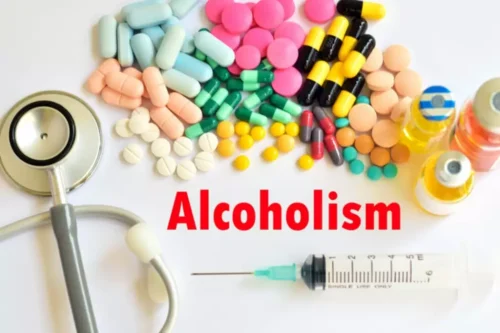
Adapted from ‘An introduction to concept mapping for program planning and evaluation’ by W. The datasets used and analyzed during the current study are available from the corresponding author on reasonable request. We conducted a systematic search for relevant articles published before June 13th, 2020, in consultation with a science literature librarian at the University of Pennsylvania. Data extraction and synthesis the abstinence violation effect refers to was completed in accordance with Preferred Reporting Items for Systematic Reviews and Meta-Analyses (PRISMA) 2020 guidelines for systematic reviews (30). Manual searches were conducted by reviewing references from relevant articles and previous systematic reviews on similar topics. Alan Marlatt is a professor of Psychology and Director of the Addictive Behaviors Research Center at the University of Washington.
Affective responses to overeating episodes in women participating in a behavioral weight loss program
Second, for several predictors scientific evidence for a direct association with relapse in weight loss maintenance behaviors is lacking in prior research. Therefore, to examine whether the identified perceived predictors in this study indeed predict relapse in weight loss maintenance behaviors, a larger prospective study is recommended. We suggest an ecological momentary assessment (EMA) study to track experiences over time and get insight into the process of behavior change, among which lapsing and relapsing (Shiffman, Stone, & Hufford, 2008).
- For example, ‘maladaptive coping skills’ was specifically aimed at dietary behavior, whereas ‘perceived weather barriers’ was specifically aimed at physical activity.
- In this case, individuals try to explain to themselves why they violated their goal of abstinence.
- However, the agency is unable to test and identify all products that have potentially harmful hidden ingredients.
- Specifically, RP was most effective when applied to alcohol or polysubstance use disorders, combined with the adjunctive use of medication, and when evaluated immediately following treatment.
A Systematic Review of Binge Eating, Loss of Control Eating, and Weight Loss in Children and Adolescents
For example, overeaters may have an AVE when they express to themselves, “one slice of cheesecake is a lapse, so I may as well go all-out, and have the rest of the cheesecake.” That is, since they have violated the rule of abstinence, they “may as well” get the most out of the lapse. Treatment in this component involves describing the AVE, and working with the client to learn alternative coping skills for when a lapse occurs, such that a relapse is prevented. The AVE occurs when a client is in a high-risk situation and views the potential lapse as so severe, that he or she may as well relapse. The treatment is not lapse prevention; lapses are to be expected, planned for, and taken as opportunities for the client to demonstrate learning. Most often, relapse tends to be construed as a return to pretreatment levels of occurrence of the targeted behavior. Although there is some debate about the best definitions of lapse and relapse from theoretical and conceptual levels, these definitions should suffice.
Positive cognitive coping strategies and binge eating in college women

To date there has been limited research on retention rates in nonabstinence treatment. This suggests that individuals with nonabstinence goals are retained as well as, if not better than, those working toward abstinence, though additional research is needed to confirm these results and examine the effect of goal-matching on retention. Given data demonstrating a clear link between abstinence goals and treatment engagement in a primarily abstinence-based SUD treatment system, it is reasonable to hypothesize that offering nonabstinence treatment would increase overall engagement by appealing to those with nonabstinence goals. Indeed, there is anecdotal evidence that this may be the case; for example, a qualitative study of nonabstinence drug treatment in Denmark described a client saying that he would not have presented to abstinence-only treatment due to his goal of moderate use (Järvinen, 2017). Additionally, in the United Kingdom, where there is greater access to nonabstinence treatment (Rosenberg & Melville, 2005; Rosenberg & Phillips, 2003), the proportion of individuals with opioid use disorder engaged in treatment is more than twice that of the U.S. (60% vs. 28%; Burkinshaw et al., 2017). To date, however, there has been little empirical research directly testing this hypothesis.
Lapse-activated consumption
CBT treatments are usually guided by a manual, are relatively short term (12 to 16 weeks) in duration, and focus on the present and future. Clients are expected to monitor substance use (see Table 8.1) and complete homework exercises between sessions. These properties of the abstinence violation effect also apply to individuals who do not have a goal to abstain, but instead have a goal to restrict their use within certain self-determined limits. The limit violation effect describes what happens when these individuals fail to restrict their use within their predetermined limits and the subsequent effects of this failure. These individuals also experience negative emotions similar to those experienced by the abstinence violators and may also drink more to cope with these negative emotions. In a similar fashion, the nature of these attributions determines whether the violation will lead to full-blown relapse.
ALA is funded by the Medical Research Council (MC_UU_00006/6) and was PI of an NIHR PGfaR‐funded study where the intervention was provided by WW (formerly Weight Watchers) at no cost. ALA is part of the WW Scientific Advisory Board, which the MRC Epidemiology Unit, University of Cambridge, is paid for their time. The University of Leeds has received payment for work by JCGH with Novo Nordisk, Dupont, Boehringer Ingelheim International GmbH, and Mars Wrigley. CAR has received grant funding from Unilever, and has acted as consultant to Boehringer Ingelheim, both of which are unrelated to the current work. Another strength is that this review highlighted how evidence yielded by different analytical approaches can be used alongside each other to add nuance in the understanding of the experiences.
A high-risk situation is defined as a circumstance in which an individual’s attempt to refrain from a particular behaviour is threatened. While analysing high-risk situations the client is asked to generate a list of situations that are low-risk, and to determine what aspects of those situations differentiate them from the high-risk situations. High-risk situations are determined by an analysis of previous lapses and by reports of situations in which the client feels or felt https://ecosoberhouse.com/ “tempted.” Appropriate responses are those behaviours that lead to avoidance of high-risk situations, or behaviours that foster adaptive responses. Seemingly irrelevant decisions (SIDs) are those behaviours that are early in the path of decisions that place the client in a high-risk situation. For example, if the client understands that using alcohol in the day time triggers a binge, agreeing for a meeting in the afternoon in a restaurant that serves alcohol would be a SID5.
Leave a Reply